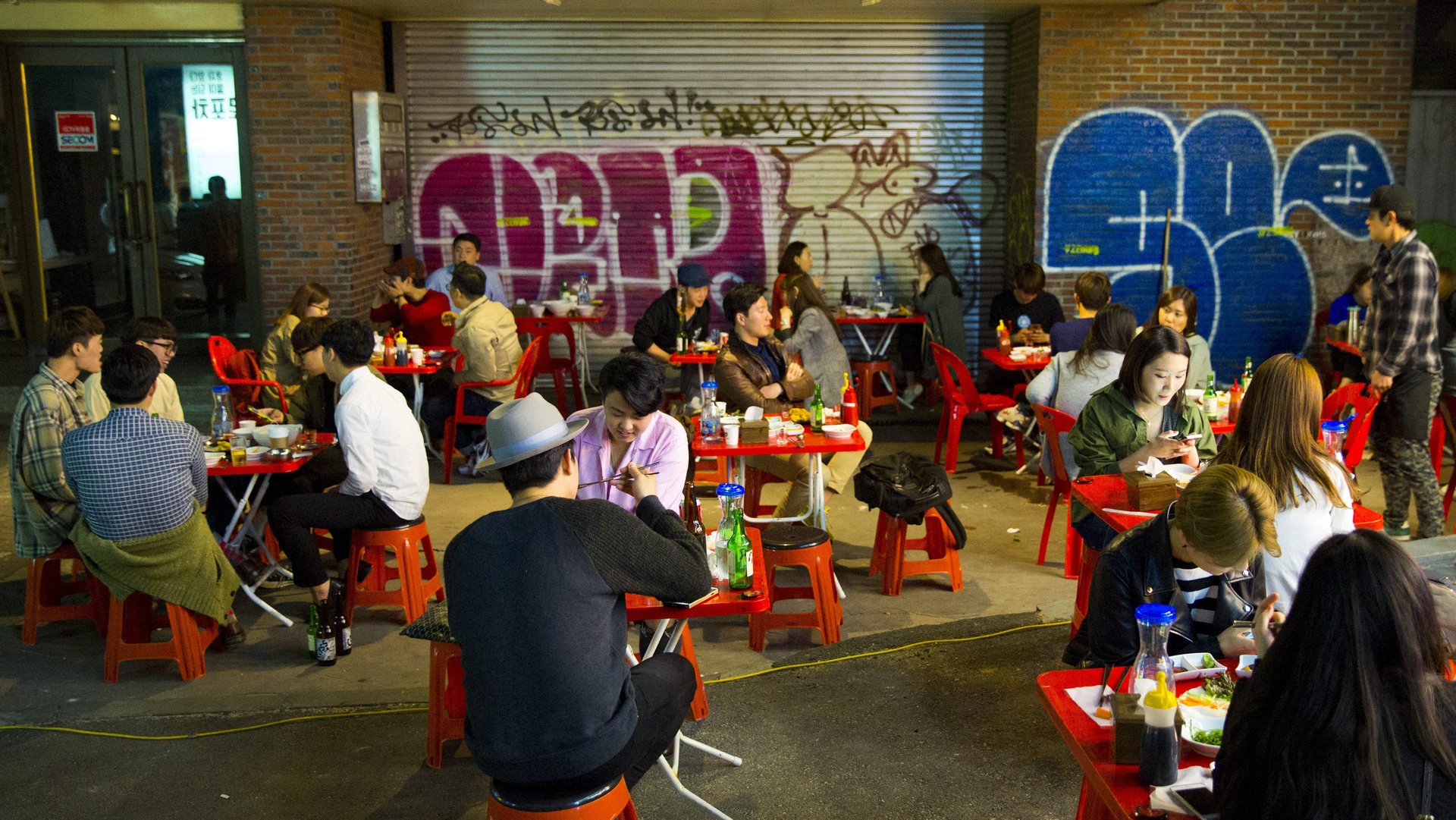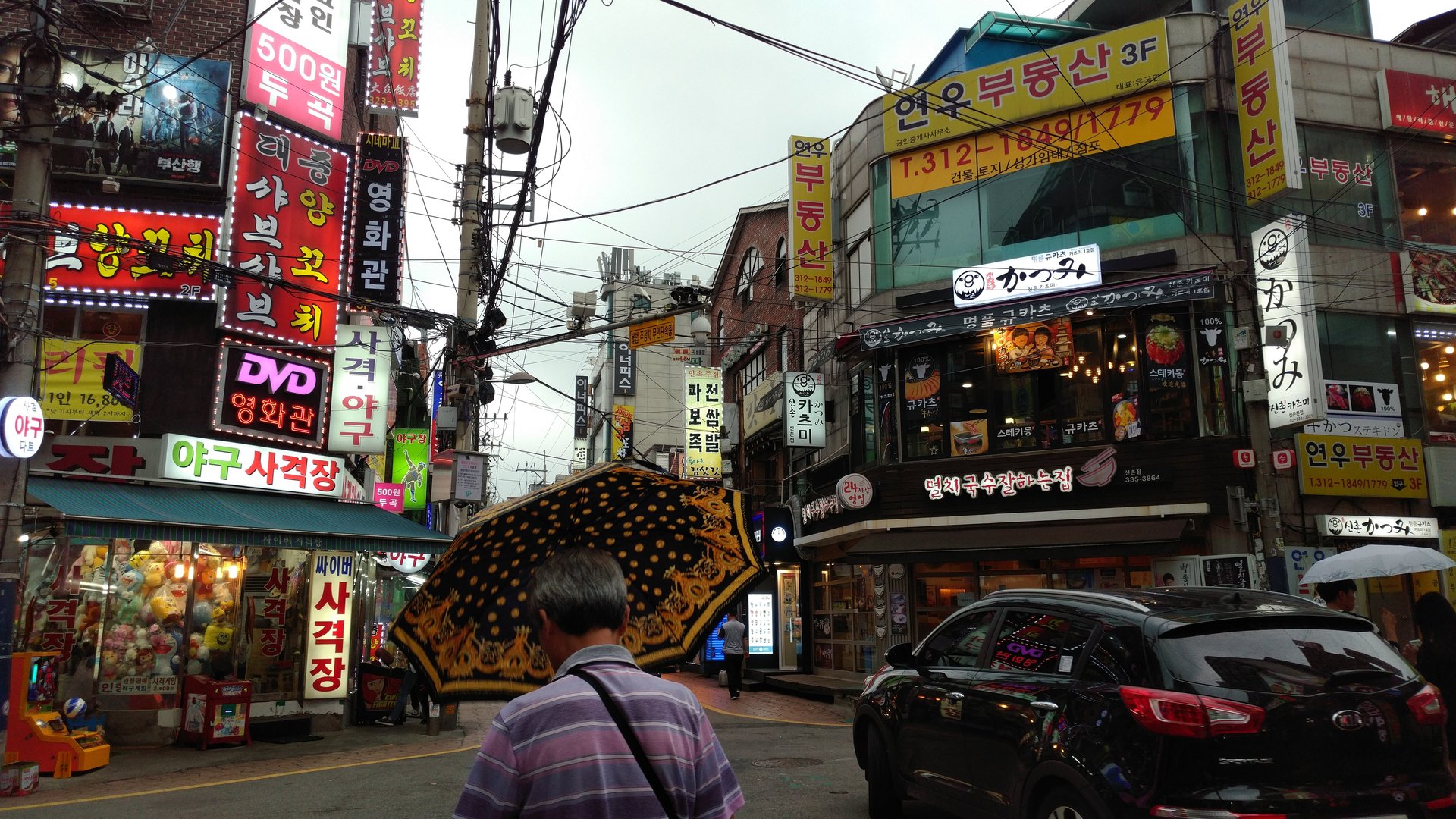South Korea’s play culture is a dark symptom of overwork
If there was a prize for the most stressed-out nation in the world, South Korea would make a good contender.


If there was a prize for the most stressed-out nation in the world, South Korea would make a good contender.
In South Korea, work and play are taken to extremes. South Korean adults work the second-longest hours but earn less-than-average pay compared to other nations in the Organization for Economic Cooperation and Development. Those long hours start at a young age, with Korean children often spending as much as 14 hours a day in a classroom between regular school and private, afternoon academies called hagwons.
That’s definitely taking a toll. In high school, Korean students get an average of 5 hours and 27 minutes of sleep a night, according to a 2014 poll. South Korean youth and adults also suffer from the highest suicide rate in the world among OECD countries.
“For kids, life progressively moves toward the college entrance exam. Talk about high stakes—it’s a make-or-break,” says Timothy Vandergast, a professor of special education and counseling at William Paterson University who lived in South Korea for eight years. “However kids do on that [exam] ranks and orders them into top-tier, second-tier and third-tier schools. That impacts their marriage and professional opportunities for life.”
Vandergast put it simply: “Stress is the accepted way of life in Korea.”
Cathartic fun
The pressure to succeed in South Korea has fostered a culture of play that at first glance looks unusually vibrant and fun. The average Seoulite has plenty of options to blow off their steam: arcades with late-night hours and ID checks at the door, rage rooms for object-smashing fun, 24-hour computer and video game rooms, VR cafes, party buses, overnight spas, street carnival games, claw machines and exotic animal cafes (for raccoon snuggles). Noraebang karaoke rooms, a cultural staple in Korea’s music-oriented culture, are popularly known as a place specifically for stress relief. They’re a real party: Two microphones, tambourines, and disco or strobe lights are almost always included.

In Seoul, these party districts look like lit-up carnivals at night—and though they tend to be around well-known universities, it’s common to see people well above their 20s trying to score a stuffed animal at the balloon dart stands.
“As a historian, this fits into Korean society’s historical patterns,” said C. Harrison Kim, an assistant professor at the University of Hawaii Mānoa Department of History who specializes in research on the Koreas. “Korean society is framed by order and hierarchy and this demand to meet expectations. This kind of social setting, at the same time, gives legitimate space to let all of that go—to let things loose.”
As it turns out, that this brand of fun might’ve stemmed from South Korea’s explosive rise to an economic world power.
South Korea was an agrarian, poverty-stricken society after the Korean War of the early 1950s. But over the next few decades—particularly between the 1960s and 1980s—the nation plowed forward with rapid economic development now referred to “The Miracle of the Han River.” Suddenly, there was a middle class with money to spend and places to spend it—but there was also increasing pressure to succeed in a capitalist meritocracy.
“It was a society in flux. It was a world in which somebody from a rural background could become an important person in a research institution or at a corporation—there was social mobility and a real sense of lives being changed,” said Laurel Kendall, chair of the American Museum of Natural History’s Division of Anthropology (Kendall has spent decades studying the Korean peninsula). “But by the 1980s, there was a sense that things were tightening up—that there were new elites in place and that access to the higher rungs was more difficult. And yet these very strong middle class aspirations continued.”
Meanwhile, noraebangs (singing rooms) became a way of life in Seoul by the 1990s.

In South Korea, working is drinking
There is something innate about South Korea’s love for fun. Korean adults, for example, often use the word “play” to describe time spent with friends of the same age (their social equals). Meanwhile, American culture generally reserves that word for children—by adulthood, it’s more likely to become “hanging out,” “meeting up” or “grabbing a drink.”
But in Kim’s eyes, work and play are “two extremes that coexist, and they’re equally important for Korean culture.” In a way, the two fuel each other—work is tough, so stress relief is needed.
In fact, Korea is somewhat unique because career building typically requires the act of stress relief. Korean workers and academics are routinely expected to take part in “hwe-sik”—the act of eating and binge-drinking with bosses and coworkers, which may come with a second round of screaming Kpop ballads into a microphone. It’s sort of like golf to American business people, but with lots of soju.
“Every company has hwe-sik culture where, at the end of the day, boundaries are broken over drinking and talking,” Kim said. “Corporate culture is stressful and hierarchical, but I’m always amazed at how much a company spends on paying for drinks and food for its employees just so they can let it out.”
Though hwe-sik has its merits, Koreans have also publicly expressed concerns about their health and a work culture where employees are sometimes forced to binge drink. In a 2013 article fittingly called “adversities of being [a] rookie employee,” a 36-year-old employee at a book publishing company recalled his bosses testing how much beer and soju he could drink. “They said it was a rite of passage to become a well-established salesman,” he told The Korea Times.
South Koreans drink an average of 13.7 shots of liquor a week, which is twice the amount of Russians and four times the amount of Americans. But unlike in the US, drinking is generally an accepted cultural norm for all ages in South Korea—even outside of hwe-sik.
“There are men and women in their 40s and late 50s who follow strict codes at work, but their ties are off and their hair is down at noraebang and they’re singing and dancing their asses off,” Kim said. “It’s a big release.”
It’s hard to know whether or not all of this is a good thing. For some, South Korea’s party culture is alcoholism at work—or a janky alternative to therapy, which many still have a deep aversion to. High incidences of depression and suicide still plague the nation, but there is also a growing interest in healthy releases. Hiking, for instance, is a recent craze.
At the very least, South Koreans show the rest of the world the importance of fun for all ages—or, alternatively, the dark need for it.